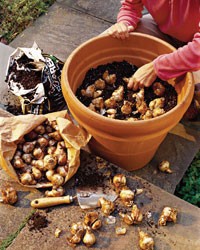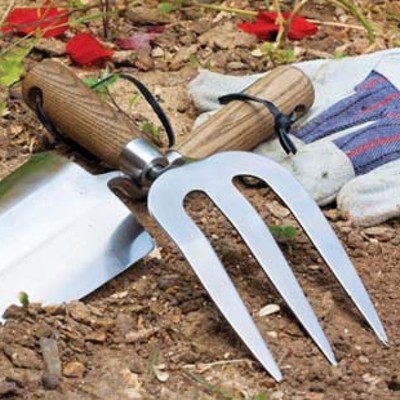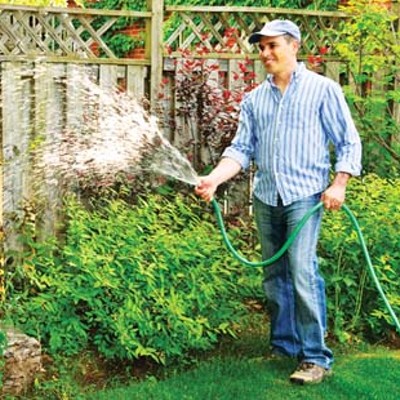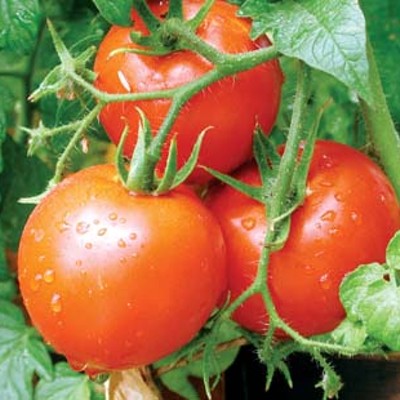Dahlias, cannas, caladiums, and gladiolus make great additions to our gardens, but the bulbs of these summer bloomers have trouble with Illinois’ harsh winters and need special attention in the fall.
By digging and then storing tender bulbs in a warmer area for the winter months, you can save your bulbs from year to year, but to store bulbs successfully you need to know the procedure for each type of plant.
Remove bulbs after the foliage has turned yellow or after the first frost but definitely before a hard freeze. Using a pitchfork or spade, loosen the roots gently all the way around the plant. Dig several inches from the base of the plants to avoid cutting off any roots; avoid breaking or skinning the fleshy bulbs or roots.
Bulbs must be allowed to dry before they are stored. Curing time for dahlias, cannas, and caladiums is short, one to three days; gladiolus takes a full three weeks to cure.
After the bulbs are dry, remove dead or decomposed plant material and excess soil. Store only dry, healthy bulbs. If a bulb is damaged but you want to save it, store it separately from healthy bulbs; damaged bulbs rot easily.
Good storage media include dry sphagnum moss, sand, and vermiculite. Most bulbs should be stored with the top up and the roots down; do not allow bulbs to touch. Store bulbs in an area free of excessive humidity and rodents. Arrange for good air circulation and do not let bulbs freeze.
Gladiolus grow from a corm, a swollen stem base. Each summer a new corm forms on the top of the old one. Dig gladiolus with the tops attached. Tie the tops together in a bunch and label them. Hang the bunches in a warm, dry place until the tops and roots are thoroughly dry. Gladiolus need approximately three weeks in a dry, well-ventilated area to cure. After they are dry, cut off the tops and remove the old corms. Discard the tops, old corms, and soil in the compost pile. Store new corms in a mesh bag, paper bag, or pantyhose in a dry, cool (40 to 50 degrees) location.
Small corms, about the size of a pea to a marble, grow around the top of the old corm. These small corms, known as cormels, can be saved but usually won’t produce flowers for two or three years.
Caladiums grow from tubers. A caladium tuber has buds scattered over the tuber surface from which shoots and roots develop. Store dry tubers at 50 to 65 degrees in a dry medium such as peat moss. Caladium bulbs will not tolerate cooler storage temperatures.
Dahlias are an example of tuberous roots. These structures store food reserves in an enlarged root. Another type of tuberous roots is the tuberous-rooted begonia, which reproduces from buds on top of a round, flat tuber. After the first frost, cut back the foliage of dahlias and tuberous begonias to 5 inches and allow the tubers to dry for one to three days. Leave the clump intact; remove any damaged or soft tubers before storing the rest in dry medium such as peat moss or vermiculite at 40-50 degrees in a dark location.
Tubers and tuberous roots multiply by division. Divide tubers in the spring, at planting time. The root should be divided into sections with an eye-bearing portion of the stem left with each section of root.
Cannas have rhizomes, a storage structure that grows horizontally beneath the soil surface. After a frost has killed the foliage, cut the stems to 6 inches before digging. Dry the rhizomes for one to three days and then store them in dry medium at 40 to 50 degrees.
Be sure to label each box or bulb with the plant’s name — you can write directly on fleshy roots such as dahlia with a permanent marker. It may also be helpful to write the flower color and height on the storage box.
Check bulbs several times throughout the winter. Look for rot, insect infestation, disease, and rodent damage. Remove any damaged or rotting bulbs.
With some special attention this fall, you will be able to save money and expand your garden with summer bulbs next year.
Jennifer Fishburn is a horticulture educator with the University of Illinois Extension Sangamon-Menard Unit. Contact her at www.extension.uiuc.edu/Sangamon.






















